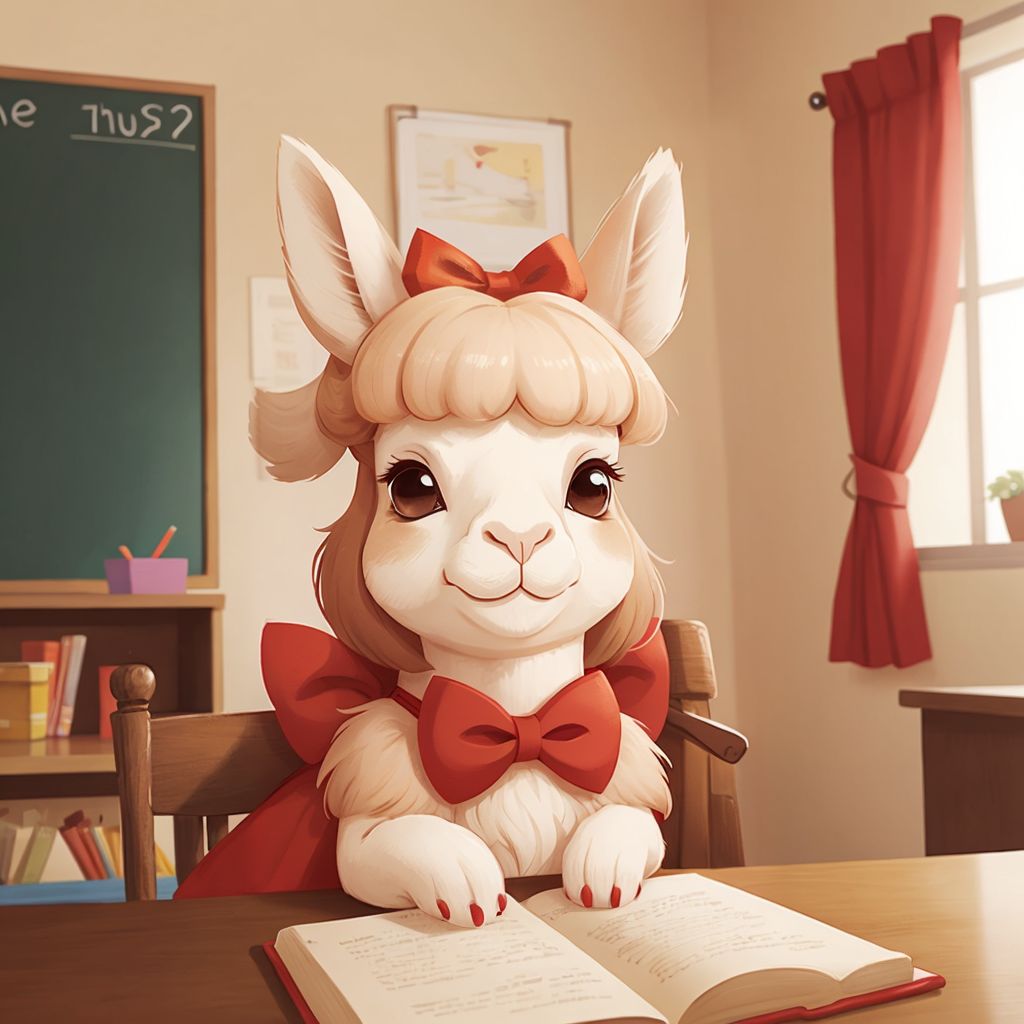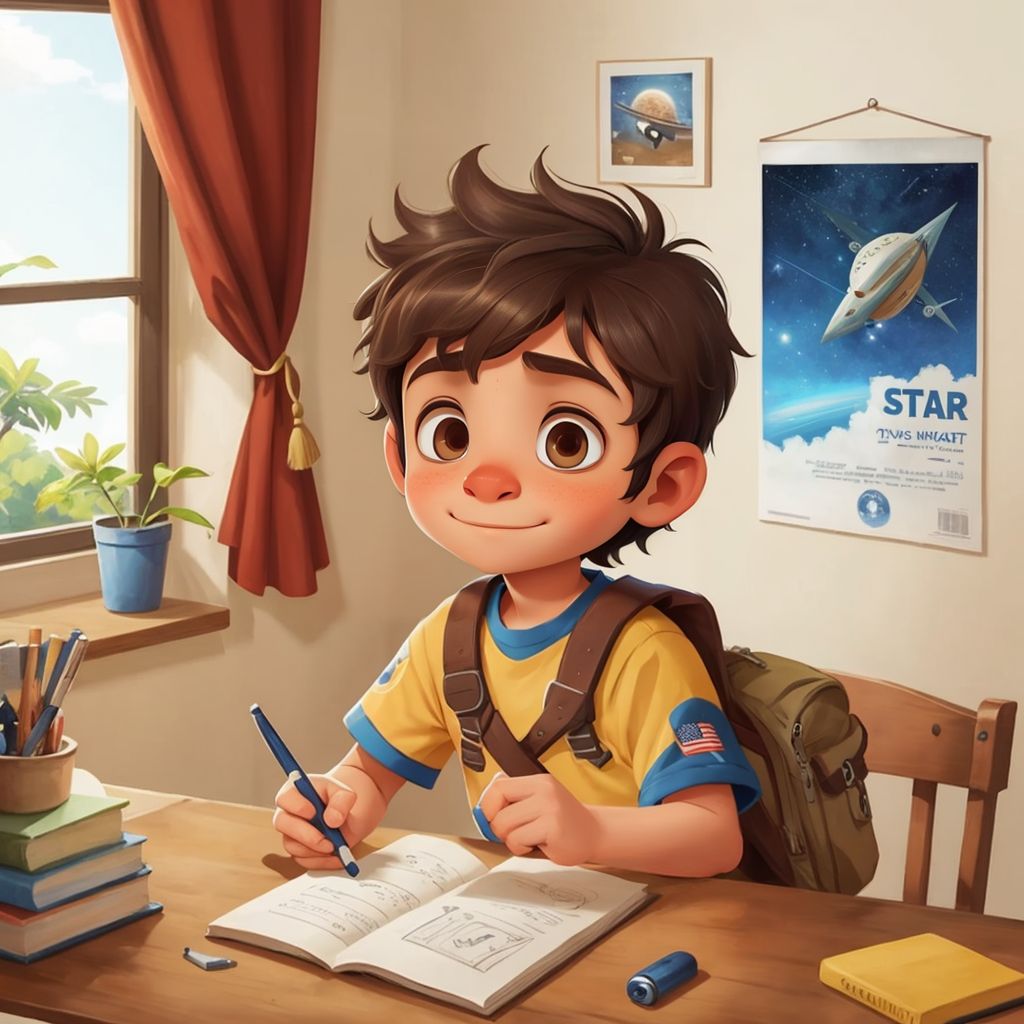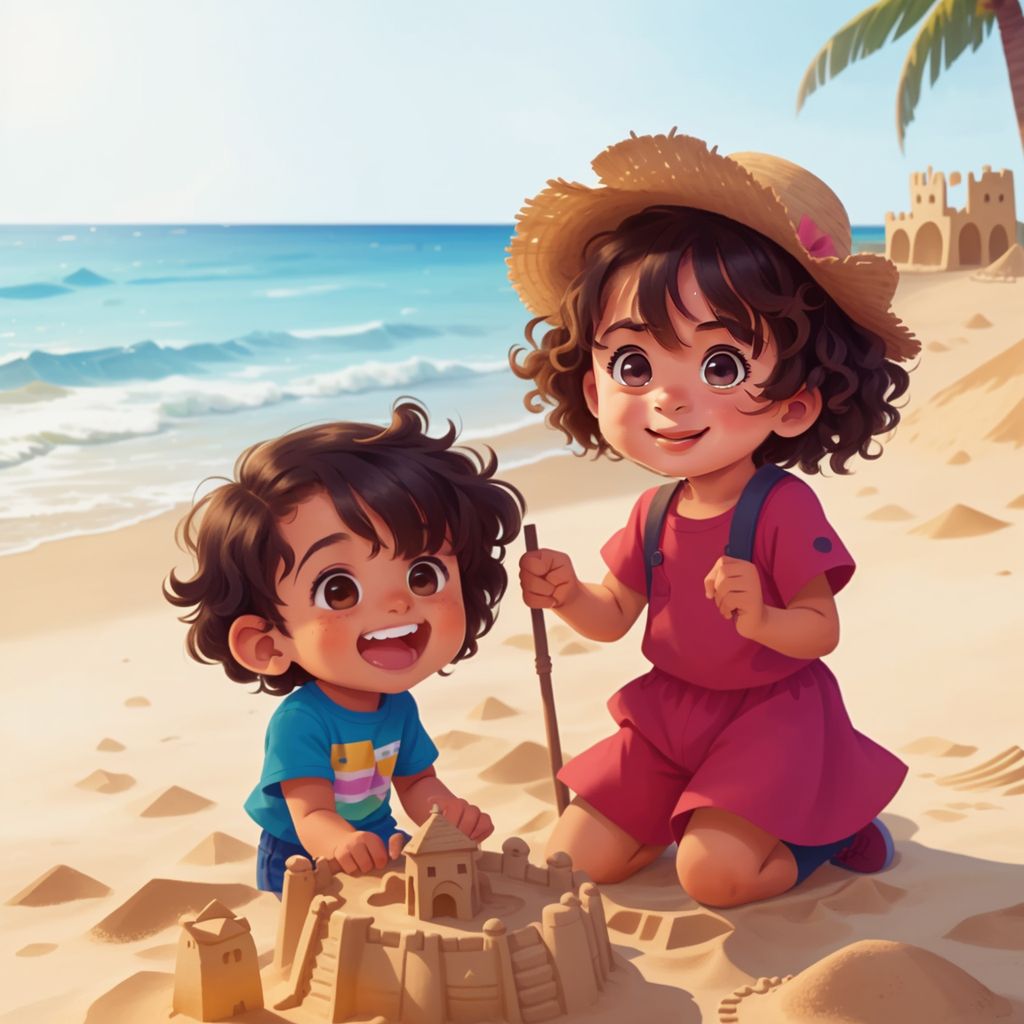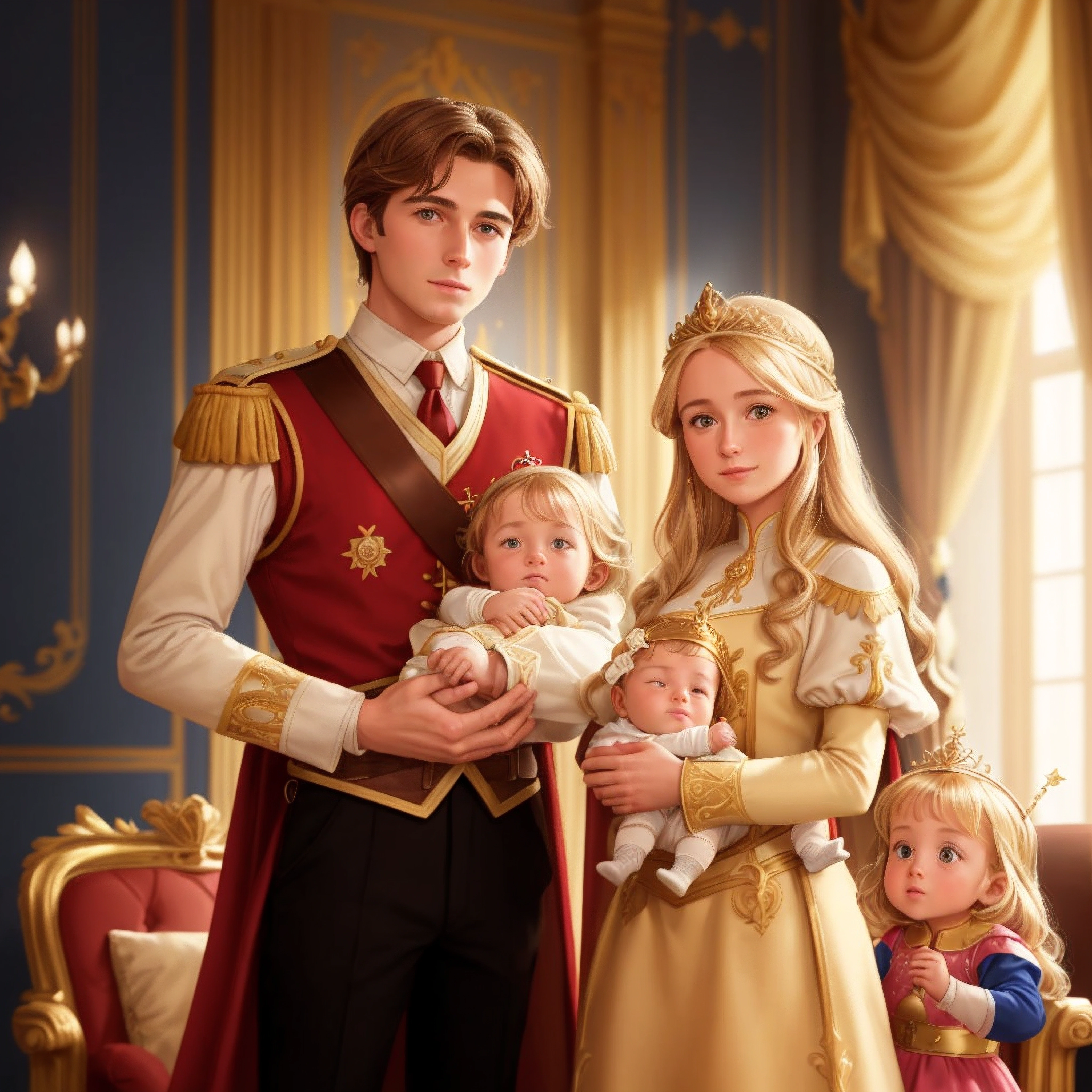

Recommend

On a sunny day at Grandma's house, four cousins—Natalia (3), Kingston (2), Peyton (10), and Madison (8)—embark on an unforgettable treasure hunt guided by a mysterious map. Along the way, they uncover family heirlooms, old photographs, and heartwarming stories about their Great-Grandma, Great-Grandpa, and beyond. Through teamwork, laughter, and curiosity, they not only learn about their family’s rich history but also bond over a shared secret: Natalia and Kingston’s mommy is expecting a baby brother! This heartwarming adventure celebrates love, heritage, and the importance of preserving memories for generations to come.

A boy, Jamey, and his pug, Peanut Butter, have fun and get into silly trouble together.

i want to create a storybook for a 3 year old toddler. The story is about her dad getting shoulder surgery. he has recovery time for 6 weeks and will be wearing a sling on his left shoulder. he will go to physical therapy after 6 weeks. the toddler should understand and give time for dad's healing. once dad is healed he will play again with the toddler. when he is sick, toddler should understand and give him space to heal. create a book

Vega, a little star with a big heart, wishes to learn about life beyond the night sky. Her visit to Earth presents her to beautiful meadows, playful wildlife, and happy children. Through her journeys, Vega learns the value of new experiences and the significance of her job in the sky.

The Wax Crocodile is a tale of magic and morality from ancient Egypt. It centers on a Pharaoh's visit to his chief scribe’s villa, where the scribe’s wife secretly falls for a young man. Upon discovering the affair, the scribe uses a magical wax crocodile to punish the young lover, turning the wax into a live crocodile that captures him. When revealed to the Pharaoh, the scribe demonstrates his magical control, impressing the ruler. The story concludes with the young man's disappearance and the punishment of the scribe’s wife, underscoring themes of justice and supernatural power.

A 3 year old girl gets to be a mermaid for a day

two Muppet characters, Roary the Lion and Squeaks the Mouse, telling a tale about kindness. The story emphasizes the importance of being kind to others regardless of their size or appearance, and how everyone has something valuable to offer.

It's Kobi's 3rd birthday and all she wants is a white birthday cake with colorful sprinkles. But on the day of her birthday she thinks her mommy forgot all about her cake. She goes to school where everyone celebrates her birthday but she feels sad because there is no cake. At home she gets all of her toys and presents, but no cake. They go out to eat at her favorite restaurant. Kobi is happy but she still wants her cake. After they get home, mommy tells Kobi she has a surprise for her and pulls out a beautiful little white cake with colorful sprinkles. She kisses Kobi and tells her happy 3rd birthday.

a Latin llama learning to read. Focus on: * Age range: 3-8 years * Reading difficulty support * Engaging, simple language * Emotional learning journey"

Help my children feel at ease while they know what I’m doing this weekend as I go away from them for the first time. Tell them about how I’m going to be so sad and miss them as I leave the house. How I think about them all the time I’m gone. How I get an uber to the airport, then go through airport security and sit at the lounge before getting on an Air New Zealand plane and fly to Queenstown. How happy I am to be reunited with all my best friends. We are all mums leaving our kids for the first time so we all FaceTime our kids and miss them a lot. And talk about how proud we are of them. Then we have a Mexican night dinner. Then we do a dance class. And after 2 nights away of having fun, I’m so excited to go to the airport and fly back to sydney. Meanwhile Dadda is spoiling them with fun treats like burgers and chips, and taking them to soccer and swimming classes, and even a friends birthday party. They get to watch TV and have so much fun jumping on the bed and being silly with Dadda. Then how I get reunited with my boys Teddy and Max and I’m so happy I could cry with joy.

1. Colson rode the ferris wheel 2. Colson rode the teacups 3. Colson rode a rollercoaster 4. Colson ate a turkey leg

Leo, Maya, and Alex were best friends who loved everything about space. One day, they got the most exciting news: they had been chosen to become junior astronauts and go on a mission to the Moon aboard The Star Voyager! They couldn't wait to start their adventure. At the Space Academy, they trained with Commander Vega, learning how to pilot the spacecraft, put on space suits, and even float in zero gravity. The Moon was their destination, and they were eager to see it up close. On launch day, the trio suited up in their shiny silver space suits and boarded The Star Voyager. As the countdown began—“Ten... nine... eight..."—their excitement grew. "Three... two... one... Blast off!" The rocket roared to life and shot into the sky, taking them on a journey beyond Earth. After a smooth flight, they reached the Moon. The surface was dusty and gray, covered with craters of all sizes. As they landed, Leo, Maya, and Alex couldn’t believe their eyes. The Moon was even more incredible than they had imagined! They put on their helmets and stepped outside. The first thing they noticed was how light they felt. The Moon’s gravity is only about one-sixth of Earth’s, so they could jump really high and far. They laughed as they bounced around, leaving footprints in the Moon dust. As they explored, they learned some amazing facts. The Moon doesn’t have any air, so there’s no wind or weather to change its surface. That’s why the footprints they made would stay there for thousands of years! They also discovered that the Moon has no light of its own—it only shines because it reflects light from the Sun. Leo, Maya, and Alex also visited a huge crater called Tycho. They marveled at the steep walls and rocky surface. Commander Vega explained that the craters were formed by meteoroids crashing into the Moon long ago. They even saw some Moon rocks, which looked different from the rocks on Earth because of the lack of atmosphere.

Once upon a time, there was a woman named Faithful from a distant land. She was introverted and often felt lonely, but she loved Jesus Christ deeply.

Scorching summer days stretched before us. Suddenly, my brother Suraj burst in, panicked. Someone kept calling and hanging up! Turns out, he accidentally dialed the police, fearing my wrath more than the authorities. The phone blared again – it was Grandpa, worried about the police and firefighters outside our house! Apparently, our identically numbered neighbor had the "fire." Chaos ensued as Dad received a call about the false alarm. Terrified, we hid until the police arrived. A sheepish apology letter later, and all was (mostly) forgiven. As the sun dipped below the horizon, we laughed about the crazy day. It was a scary mix-up, but a hilarious reminder of the importance of honesty and communication. And maybe double-checking the house number before dialing 100.

make a childrens book of a 13 year old boy talking about a memory of a holiday, with mexican traditions and getting a suprise visit from his grandma from mexico

In "The Princess and the Golden Ball," Princess Isabella discovers a magical golden ball that promises great fortune but soon falls under its spell, neglecting her responsibilities and attracting the attention of an evil sorceress. Through a harrowing journey filled with challenges and magical encounters, Princess Isabella must confront the sorceress to reclaim the golden ball and protect her kingdom. Ultimately, her pure heart and unwavering bravery triumph over darkness, and she learns the true meaning of power and magic. Princess Isabella's legacy of wisdom, compassion, and courage endures as she rules her kingdom with kindness, using the golden ball's magic for the benefit of her people.

STOP AL Cyberbullismo

Renata and sofia are on vacation making sand castles at the beach. They fall inside the sand castle it and meet the queen she asks for help finding her numbers. Inside the many rooms of the castle they find 1 eating then 2 sleeping then 3 coloring then 4,5,6 dancing together 7 and eight playing, 9 and finally ten. They take them all.back to the queen and she is so happy she gives them each a crown

Princess Keira was born to King Arthur and Queen Eugenie

ффффффф
